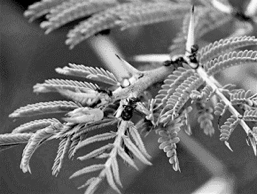The ontogeny of mutualism: exploring variation in costs and benefits within an ant-plant symbiosis

Using a multi-species ant-Acacia mutualism as a model system, my research objective for this CAREER-funded project is to evaluate how the costs and benefits of mutualism change with the ontogenetic stage of interacting partner species, and how the net fitness effects of multiple interactions change with variation in the timing, duration and sequence of plant partnerships with different ant species. Acacia drepanolobium is a long-lived African ant- plant that associates with four species of obligate acacia-ants throughout its ontogeny, and each ant species exerts strongly contrasting effects on their host trees. While host trees live > 100 yrs, the average duration of ant occupancy on trees is ca. 5 years, such that trees interact with multiple ant species across their ontogeny. Recently, my colleagues and I have shown that ant symbionts confer net disadvantages to host plants over a 5 yr period, and yet we know that the symbiosis leads to higher lifetime fitness for plants. Reconciling these apparently contradictory results demands a careful investigation of ontogenetic dependence within this widespread model ant-plant symbiosis. I will use observations, experiments and models to (1) measure the costs and benefits of associations with different ant symbiont species across plant ontogeny, (2) evaluate the effects of host plant resource competition on the ontogeny of both ant and plant partners, (3) assess the effects of the sequence of ant symbiont occupancy on acacia performance. A detailed understanding of the natural history of the A. drepanolobium system along with a 18-year dataset on its dynamics and proven techniques for manipulating partners within the mutualism, offers an unusual opportunity for transformative research examining the nature and consequences of multiple partnerships across mutualist ontogeny.
To return to the research page, click here

